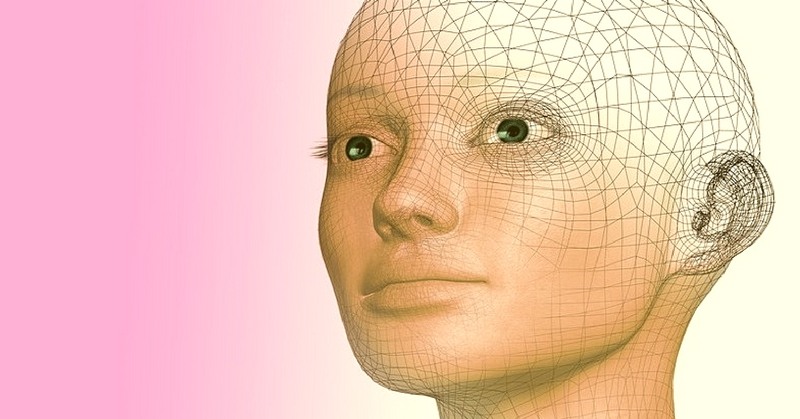What’s the difference between the unconscious and the subconscious?
Sounds like a very bad joke, doesn’t it? Thankfully, there is no punch line.
This is a question that has no definitive answer. So what follows shouldn’t be considered the whole truth – we may never discover that – but, instead, one interpretation.
First of all, it’s worth mentioning that those with white coats and letters after their names will almost always refer to the unconscious, and rarely to the subconscious. They use the one term to refer to all the mental processes that occur outside of our conscious awareness.
But let’s throw those coats aside and don our thinking hats for a second and see if we can’t come up with a way to define each ‘part’ of the mind separately (you’ll see why we put ‘part’ in inverted commas later in the article).
It All Comes Down To Accessibility
Our main point of separation will focus on how and whether we can access the processes that take place in each of the unconscious and subconscious.
What do we mean by access? Essentially, can you bring a particular process to the forefront of your conscious mind and ‘think’ about it in the sense of having sense-based or language-based thoughts and conceptions.
Let’s take memory, for example: think back to a childhood holiday you remember fondly. Can you picture the scene, can you hear the sounds, can you smell the scents that drift on the breeze?
No doubt you’ll have some recollection of those things. But can you ‘remember’ the feelings of joy and happiness?
“Well, of course I can,” you might say, “I’m feeling happier just by thinking back to this time in my life.”
But here’s where it gets interesting. You can isolate and recall a sight by itself. You can do the same for a sound, a taste, a smell, and even the touch of something – perhaps sand between your toes.
Now try to isolate the happy feeling you felt at that time without bringing any of those other sensory memories into your conscious mind. Try to isolate a feeling without the associated conscious memories and you can’t.
You can’t access feelings directly. They are hidden from you.
Or try this: pretend you’ve been asked to act out the part of someone who is crying. No reason is given, you just have to shed a tear.
How would you do it?
Can you force yourself to cry?
Try it and see. Not possible, is it?
So how do actors make themselves cry in films or on stage? What would you do?
Chances are you’d have to recall a sad or distressing memory. You’d have to access the stored input from your five senses and bring them into your conscious awareness. This would then trigger a feeling of sorrow and the tears may begin to flow.
But you can’t elicit the feeling without first bringing back painful memories of past events in the form of the things you saw, the sounds you heard, and so on.
What does this mean? Well, it means that memories in the sensory form are something that the conscious mind can access directly. It can recall (sometimes instantly, sometimes given a bit of time) an echo of the interaction you once had with your environment.
Emotional memories, however, can only be accessed via association. Our sensory memories act as a conduit or pathway to our emotional memories.
What about skills? When you ride a bicycle, what part of your mind is in control? The answer is: it depends.
When you first learn to ride, it takes intensive conscious effort to maintain your balance. Initially, these new abilities are a little unrefined and so you have to think about what you’re doing.
In between times, when you’re not riding your bike, these new mental processes and their accompanying physical actions are stored in your subconscious, ready for you to access once again when you next take to the saddle.
Over time, however, these processes move. Eventually you don’t have to really think at all about what you’re doing, and you can tackle more complex maneuvers at higher speeds without breaking a mental sweat.
At this stage, if you do try to consciously think about what you’re doing, it actually inhibits your abilities.
For example, have you ever felt like someone was watching you walk and then found yourself taking awkward, haphazard steps after thinking about what you are doing? That’s your conscious mind trying to take over at something your unconscious mind has already perfected.
This same progression from conscious/subconscious to unconscious takes place with most skills you learn. When you become fluent in a second language, you don’t think about and translate each word that is spoken into your mother tongue, you just understand what is being said implicitly.
It is possible to access the translation of each word that is spoken or even phrases and sentences – they still exist within your subconscious – but you cannot have a fully fluent conversation this way.
So the unconscious mind is where skills go to buy a house and live. The subconscious is merely where they go to school.
But there is more…
While some skills tend to stay with us for our entire lives (they say riding a bike is one of them), others can be lost or become rusty. Second languages are a good example; if you stop speaking them for long enough, you will lose your fluency.
If you’re lucky, you will still be able to grasp the rough meaning of what is being said, and give a basic response, but you’ll likely make grammatical errors and forget some words and phrases entirely.
At this point, your ability to simply understand and conceptualize what it being said will be gone. The fragmented residue of your lingual knowledge will require conscious attention and effort. You might say that this particular language has had to return to school – to the subconscious.
Every time you become rusty at a skill, you have to bring it back into your conscious awareness, but as you use it more regularly again, it quickly moves back to the unconscious.
Your Mind As A Smartphone
To help you visualize the difference between your unconscious and subconscious, think about your mind as a smartphone.
The screen (or more accurately the user interface) would be your conscious mind: it is where actions are taken and information is registered. It is the level at which only one thing can generally be done at once (much like you can only really think one thing at once).
The apps are the equivalent of your subconscious mind. They store things – data and skills – and can be accessed and brought to the screen level (i.e. the conscious mind) whenever needed.
So when you open your photos and videos, you are accessing memories; when you use a route finder app, you are employing a skill; when you read a news app, you are digesting and learning new information.
You can turn these apps on and off depending on your need for them, and the app store is like a university that allows you to take as many courses as you like to learn new skills.
The operating system can be thought of as your unconscious mind. Not only does it perform all the essential tasks that keep you alive, it is where some of the most commonly used processes belong.
Your standard text and phone capabilities (though visible as apps) are built into the operating system. The same goes for your calculator, sense of time, contact book, reminders, and even alarms (though not everyone’s alarm goes off each morning!)
All three levels can interact with one another just like the levels of your mind.
And, yes, this analogy might be a little clumsy and ill-fitting, but it will hopefully make the distinction between unconscious and subconscious (or conscious for that matter) clearer in your mind.
You may also like (article continues below):
- 10 Traits Of A Deep Thinker
- The Psychology Of Projection: 8 Feelings We Transfer Onto Others
- The Psychology Of Displacement And 7 Real-World Examples Of It In Action
- Balancing Your Internal-External Locus Of Control: Finding The Sweet Spot
- Intrusive Thoughts – What They Are And Why They’re Perfectly Normal
Nothing Is Fixed, Though Some Things Are More Stubborn Than Others
It is important to make clear that whether we are talking about your subconscious or unconscious mind, things can change. In fact, things change all the time.
Every new experience you have shapes your mind in ways you probably aren’t even aware of. So if you are determined to learn new skills, or unlearn unwanted behaviors, your mind is flexible and can comply with your wishes.
If you’re concerned that your anxiety or depression might be a part of your unconscious and therefore beyond your control, don’t be. Just as a phone’s operating system can receive updates, so can your unconscious mind – it just needs reprogramming.
This happens when we literally create new connections between cells in our brains called neurons. These allow signals to flow in different ways than before, forging efficient highways between regions of the brain.
Remember, though, that your unconscious mind cannot be accessed and altered directly. Instead, you need to make use of your conscious and subconscious to learn new things and create new associations between sensory inputs and emotions.
This is basically how therapy works. With the help of a trained professional and various techniques, you can “teach” your unconscious mind to act differently. You can identify triggers and practice ways of disarming them so that you respond in a new way when they are next encountered.
Some unconscious processes are more stubborn than others and will take more determination to change, but change they can.
But whatever you want to learn, or whatever you want to overcome, be optimistic, believe in yourself, and know that with the help of your conscious and subconscious minds, your unconscious can be influenced and altered.
Where Do They Live?
You might be wondering where in the brain the subconscious and unconscious minds live. Well, sorry to disappoint, but it’s not quite as simple as that.
Yes, there are parts of your brain that typically control certain movements or thought processes, but there is no physical structure that can be wholly defined as the unconscious or subconscious.
These terms are used to define the concept of separation – but there is no such separation in the physical brain. There are merely routes for brain signals to take and neurons to fire or not fire.
What’s more, it has been shown that the brain is so plastic (changeable and adaptable), that processes that were once performed in one area of the brain can sometimes be relearned by an entirely different area should it be necessary (because of some damage to the brain, for example).
Just a reminder: the ideas expressed here are merely that. They are not to be taken as truth. They are presented here to help you understand the possible way your mind operates on different levels.











